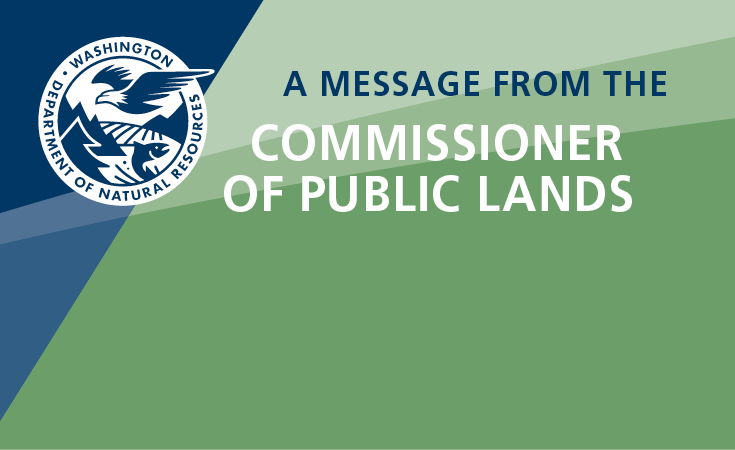Watershed Resilience Action Plan
For centuries, salmon have defined Washington. They’ve fed our culture and spirit as much as they’ve fed our people and iconic orcas. But over the past several decades, we’ve watched salmon runs — once so thick you could walk across rivers—dwindle to near extinction. Our orcas are dwindling, too, deprived of the fatty salmon that sustain them.
There have been enormous efforts to restore salmon habitat and support these shrinking populations, including investments by Tribes, government agencies, nonprofits and businesses. That work has produced tangible, positive results in building healthier habitat to help our salmon recover.
But we need to do more. And fast. Because despite our work to date, there remains a great need for bold, innovative and interconnected action across the state.
Salmon are still struggling, which means we all need to do more.
That is where this plan comes in. The Department of Natural Resources’ (DNR) Watershed Resilience Action Plan coordinates, enhances and maximizes investments and work to protect and restore salmon habitat — at a watershed scale — in ways that also provide jobs and build healthier, more equitable communities. The plan builds on existing efforts and also deploys new resources on the ground.
There is no better place to start than the Snohomish Watershed, which has a community that is incredibly dedicated to recovering salmon.
The Watershed Resilience Action Plan is holistic and comprehensive—a Tree to Sea approach. We want to use every tool, not just in the DNR toolbox, but in the toolboxes of all of the organizations and partners that are committed to saving our salmon. Salmon do not care about property boundaries or zoning. They just need a safe place to lay their eggs and grow strong enough for the ocean.
This plan is guided by five goals that drive action toward outcomes that can be measured in short- and long-terms:
- Protect and clean up aquatic habitat.
- Restore, conserve and connect forests and riparian habitat.
- Revitalize urban forests and streams.
- Engage and invest in communities.
- Reduce and combat climate impacts.
Our goals focus on different parts of the landscape—headwaters, healthy forests and riparian zones, urban areas, estuary and nearshore—so that we address salmon habitat throughout the whole watershed.
This includes a focus on what DNR already does, and how we can do more of what we do well at scale, including removing derelict vessels, correcting barriers to fish passage, reducing impacts of overwater structures, addressing pollution, improving salmon habitat, expanding tree canopies, increasing green stormwater infrastructure and preserving and restoring precious kelp forests and eelgrass meadows.
It also includes new initiatives and strategies in order to achieve resilience throughout the watershed, such as sourcing trees for woody debris projects and protecting lands suitable for beaver that could improve habitat and streamflow.
This plan coordinates with, and supports, ongoing work so that efforts amplify and complement each other and act as a magnet for new public-private partnerships and funding, which will build an even more effective and powerful salmon recovery community.
Accountability and transparency are built into this plan. In order to secure additional investments, we must have clear, accessible tools that will clarify needs and outcomes. Under this plan, all work will be captured by our Watershed Resilience Action Plan Dashboard. This is part of a collaborative effort between DNR and the Snohomish Watershed core salmon recovery team to use local data to identify what does and doesn’t deliver meaningful results in the watershed.
I want to share a huge appreciation for the work and engagement by everyone working on Snohomish salmon recovery who helped the DNR team develop this plan, especially the Tribes and local partners in the Snohomish Basin Salmon Recovery Forum. And I want to thank in advance the many partners we will collaborate with in the future to achieve the plan’s objectives.
Saving Washington’s salmon is critical to preserving what makes this place so special. This plan urges us forward, together, and ensures we are all moving in the same direction.
By doing this, we will build resilient watersheds that make our salmon and our state stronger and healthier.
Sincerely,
Commissioner of Public Lands


